The electric vehicle market continues to flourish as automakers strive to deliver innovative and efficient products. In this article, we compare two formidable contenders in the electric SUV segment: the Volvo EX40 and the VW ID.4. Both vehicles boast advanced technology, impressive performance, and eco-friendly features that appeal to the modern driver.
Volvo EX40 vs VW ID.4 – Which car suits you better?
Two cars, one duel: Volvo EX40 meets VW ID.4.
Which one wins in performance, efficiency and value for money? Find out now!
Design and Dimensions
The Volvo EX40 exudes a classic Scandinavian design, characterized by clean lines and a robust stance. Measuring 4440 mm in length, 1863 mm in width, and standing 1647 mm tall, it offers a compact yet spacious SUV experience. The design is not only aesthetically pleasing but also practical, featuring five doors and a trunk capacity of 410 liters.
On the other hand, the VW ID.4 offers a more substantial presence with its larger dimensions. It stretches up to 4584 mm in length, 1852 mm in width, and varying heights of 1619 to 1634 mm. The ID.4 also provides excellent storage solutions, boasting a trunk capacity of 543 liters, making it a more favorable option for families or anyone needing extra space.
Powertrain Performance
The power options available in the Volvo EX40 range from 238 HP to an impressive 408 HP, depending on the variant. With torque figures peaking at 670 Nm in the top-tier model, it achieves acceleration from 0-100 km/h in just 4.8 seconds. The EX40 is offered in both rear-wheel and all-wheel drive configurations, with an electric range of up to 576 km on a full charge.
Conversely, the VW ID.4 boasts a slightly different power setup. With options ranging from 170 HP to 340 HP, it also delivers strong performance with torques up to 679 Nm. The ID.4 can accelerate from 0-100 km/h in as little as 5.4 seconds, showcasing robust performance. Its electric range is highly competitive, stretching up to 572 km, making both vehicles suitable for long-distance travel.
Battery and Efficiency
The EX40 comes equipped with a battery capacity ranging from 67 kWh to 79 kWh. Its energy consumption varies between 16.6 and 17.5 kWh/100 km, depending on the model, reflecting impressive efficiency. In terms of CO2 emissions, both vehicles stand at 0 g/km, emphasizing their environmentally friendly nature.
The ID.4 offers a choice of battery sizes, including a 52 kWh and a 77 kWh option. Its energy consumption rates range between 15.8 and 16.8 kWh/100 km, providing a slightly more efficient performance than the Volvo EX40. This showcases VW's commitment to optimizing their electric vehicle technology to achieve higher efficiency without compromising performance.
Interior and Technology
Both vehicles feature modern interiors focused on driver comfort and convenience. The Volvo EX40 is equipped with advanced safety features and a state-of-the-art infotainment system that includes a large touchscreen, voice control capabilities, and compatibility with various smartphone platforms, ensuring seamless connectivity.
The VW ID.4 also integrates cutting-edge technology, including a digital cockpit, intuitive interface, and various driver-assistance features. The spacious interior design ensures ample headroom and legroom for passengers, complementing its focus on comfort for both the driver and riders.
Conclusion: Which SUV Reigns Supreme?
In comparing the Volvo EX40 and VW ID.4, we see two strong contenders in the electric SUV market. The Volvo EX40 shines with its powerful performance and stylish design, while the VW ID.4 impresses with its spacious interior and superior efficiency. Both models offer extensive features, innovative technology, and eco-friendly credentials that define modern electric vehicles. Ultimately, the choice between them will depend on personal preferences, priorities, and intended use, but both are exceptional options for anyone looking to embrace the future of driving.
Video - VW ID.4
Here’s where it gets real: The technical differences in detail
Costs and Efficiency:
Looking at overall running costs, both models reveal some interesting differences in everyday economy.
VW ID.4 has a clearly perceptible advantage in terms of price – it starts at 34600 £, while the Volvo EX40 costs 42800 £. That’s a price difference of around 8276 £.
In terms of energy consumption, the advantage goes to the VW ID.4: with 15.60 kWh per 100 km, it’s barely noticeable more efficient than the Volvo EX40 with 16.60 kWh. That’s a difference of about 1 kWh.
As for range, the Volvo EX40 performs minimal better – achieving up to 576 km, about 7 km more than the VW ID.4.
Engine and Performance:
Under the bonnet, it becomes clear which model is tuned for sportiness and which one takes the lead when you hit the accelerator.
When it comes to engine power, the Volvo EX40 has a clearly perceptible edge – offering 442 HP compared to 340 HP. That’s roughly 102 HP more horsepower.
In acceleration from 0 to 100 km/h, the Volvo EX40 is slightly quicker – completing the sprint in 4.60 s, while the VW ID.4 takes 5.40 s. That’s about 0.80 s faster.
There’s no difference in top speed – both reach 180 km/h.
There’s also a difference in torque: VW ID.4 pulls hardly perceptible stronger with 679 Nm compared to 670 Nm. That’s about 9 Nm difference.
Space and Everyday Use:
Whether family car or daily driver – which one offers more room, flexibility and comfort?
Both vehicles offer seating for 5 people.
In curb weight, VW ID.4 is minimal lighter – 1975 kg compared to 2040 kg. The difference is around 65 kg.
In terms of boot space, the VW ID.4 offers noticeable more room – 543 L compared to 410 L. That’s a difference of about 133 L.
In maximum load capacity, the VW ID.4 performs slightly better – up to 1575 L, which is about 175 L more than the Volvo EX40.
When it comes to payload, VW ID.4 slightly takes the win – 551 kg compared to 480 kg. That’s a difference of about 71 kg.
Who comes out on top?
Overall, the VW ID.4 shows itself to be only a minor advantage and secures the title of DriveDuel Champion.
It convinces with the more balanced overall package and proves to be the more versatile choice for everyday use.
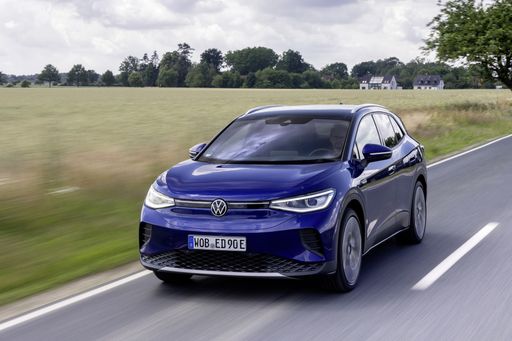 @ Volkswagen AG / VW Media
@ Volkswagen AG / VW Media
VW ID.4
Volvo EX40
The Volvo EX40 represents a new chapter in the brand's commitment to sustainability and innovation, combining elegant Scandinavian design with cutting-edge electric vehicle technology. With its spacious interior and intuitive technology, the EX40 provides a comfortable and connected driving experience. The focus on eco-friendly materials and efficient performance makes it an attractive choice for those seeking a responsible and stylish drive.
details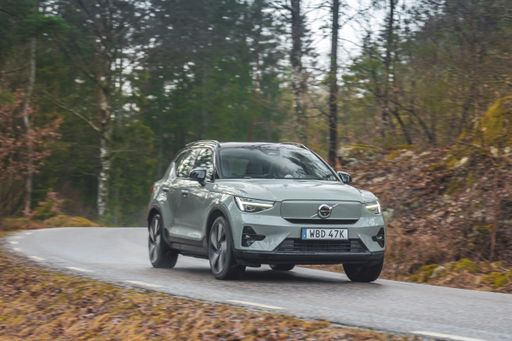 @ Volvo Cars
@ Volvo Cars
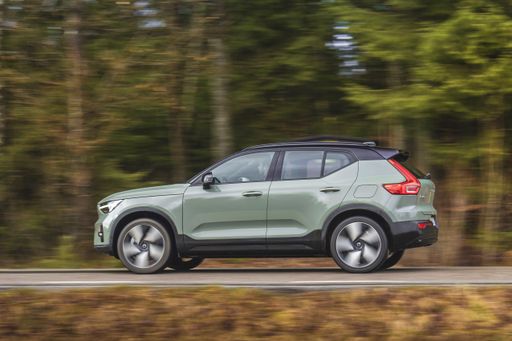 @ Volvo Cars
@ Volvo Cars
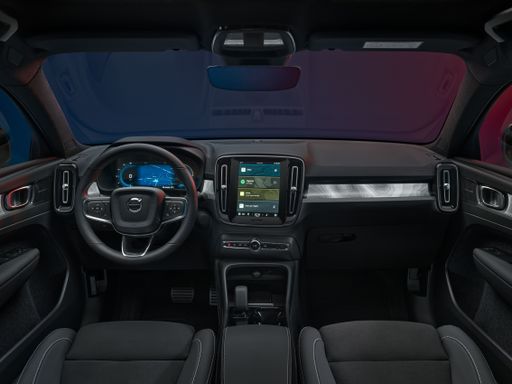 @ Volvo Cars
@ Volvo Cars
VW ID.4
The VW ID.4 is a calm, roomy electric SUV that turns everyday driving into a quietly confident experience, its practical packaging and smooth manners tailored perfectly for family life. Volkswagen's solid build and intuitive interior tech mean you get electric practicality without the sci‑fi theatrics, making the ID.4 a sensible, surprisingly likable choice for most buyers.
details @ Volkswagen AG / VW Media
@ Volkswagen AG / VW Media
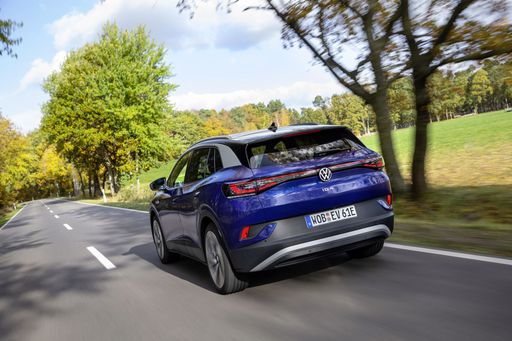 @ Volkswagen AG / VW Media
@ Volkswagen AG / VW Media
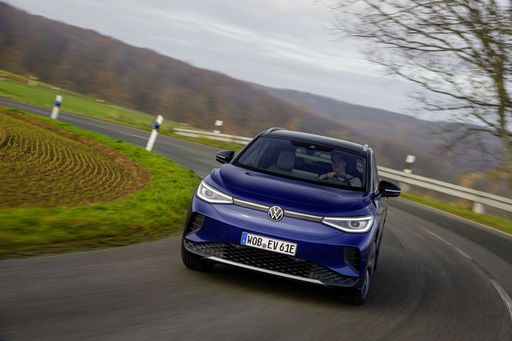 @ Volkswagen AG / VW Media
@ Volkswagen AG / VW Media
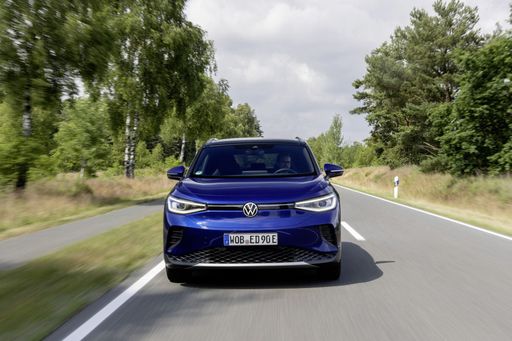 @ Volkswagen AG / VW Media
@ Volkswagen AG / VW Media
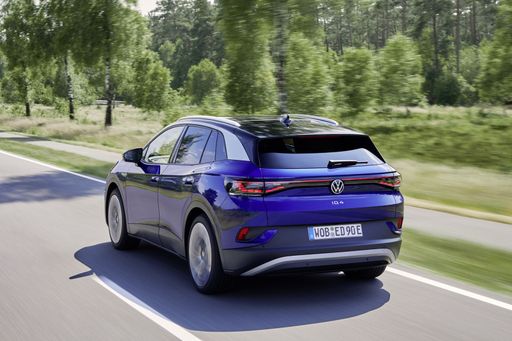 @ Volkswagen AG / VW Media
@ Volkswagen AG / VW Media
 @ Volkswagen AG / VW Media
@ Volkswagen AG / VW Media
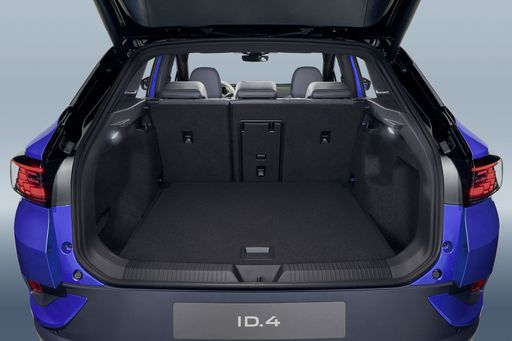 @ Volkswagen AG / VW Media
@ Volkswagen AG / VW Media
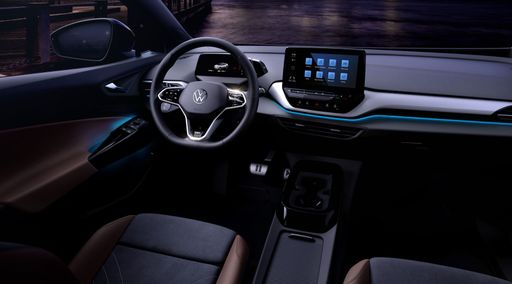 @ Volkswagen AG / VW Media
@ Volkswagen AG / VW Media
 @ Volvo Cars
@ Volvo Cars
|
 @ Volkswagen AG / VW Media
@ Volkswagen AG / VW Media
|
|
|
|
Costs and Consumption |
|
|---|---|
|
Price
42800 - 58200 £
|
Price
34600 - 47200 £
|
|
Consumption L/100km
-
|
Consumption L/100km
-
|
|
Consumption kWh/100km
16.6 - 17.6 kWh
|
Consumption kWh/100km
15.6 - 17 kWh
|
|
Electric Range
480 - 576 km
|
Electric Range
356 - 569 km
|
|
Battery Capacity
67 - 79 kWh
|
Battery Capacity
52 - 77 kWh
|
|
co2
0 g/km
|
co2
0 g/km
|
|
Fuel tank capacity
-
|
Fuel tank capacity
-
|
Dimensions and Body |
|
|---|---|
|
Body Type
SUV
|
Body Type
SUV
|
|
Seats
5
|
Seats
5
|
|
Doors
5
|
Doors
5
|
|
Curb weight
2040 - 2170 kg
|
Curb weight
1975 - 2248 kg
|
|
Trunk capacity
410 L
|
Trunk capacity
543 L
|
|
Length
4440 mm
|
Length
4582 - 4584 mm
|
|
Width
1863 mm
|
Width
1852 mm
|
|
Height
1647 mm
|
Height
1619 - 1634 mm
|
|
Max trunk capacity
1286 - 1400 L
|
Max trunk capacity
1575 L
|
|
Payload
430 - 480 kg
|
Payload
511 - 551 kg
|
Engine and Performance |
|
|---|---|
|
Engine Type
Electric
|
Engine Type
Electric
|
|
Transmission
Automatic
|
Transmission
Automatic
|
|
Transmission Detail
Reduction Gearbox
|
Transmission Detail
Reduction Gearbox
|
|
Drive Type
Rear-Wheel Drive, All-Wheel Drive
|
Drive Type
Rear-Wheel Drive, All-Wheel Drive
|
|
Power HP
238 - 442 HP
|
Power HP
170 - 340 HP
|
|
Acceleration 0-100km/h
4.6 - 7.3 s
|
Acceleration 0-100km/h
5.4 - 9 s
|
|
Max Speed
180 km/h
|
Max Speed
160 - 180 km/h
|
|
Torque
420 - 670 Nm
|
Torque
310 - 679 Nm
|
|
Number of Cylinders
-
|
Number of Cylinders
-
|
|
Power kW
175 - 325 kW
|
Power kW
125 - 250 kW
|
|
Engine capacity
-
|
Engine capacity
-
|
General |
|
|---|---|
|
Model Year
2024
|
Model Year
2023 - 2025
|
|
CO2 Efficiency Class
A
|
CO2 Efficiency Class
A
|
|
Brand
Volvo
|
Brand
VW
|
Is the Volvo EX40 offered with different drivetrains?
The Volvo EX40 is available as Rear-Wheel Drive or All-Wheel Drive.
The prices and data displayed are estimates based on German list prices and may vary by country. This information is not legally binding.
